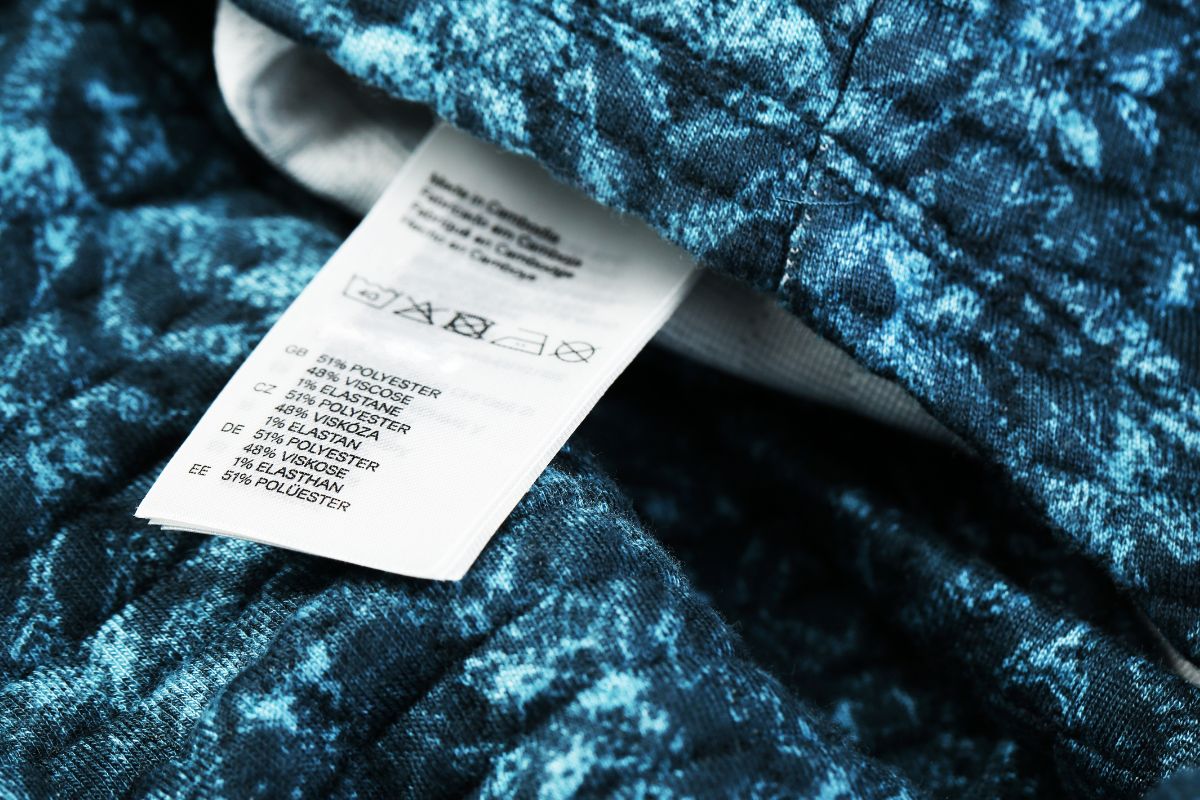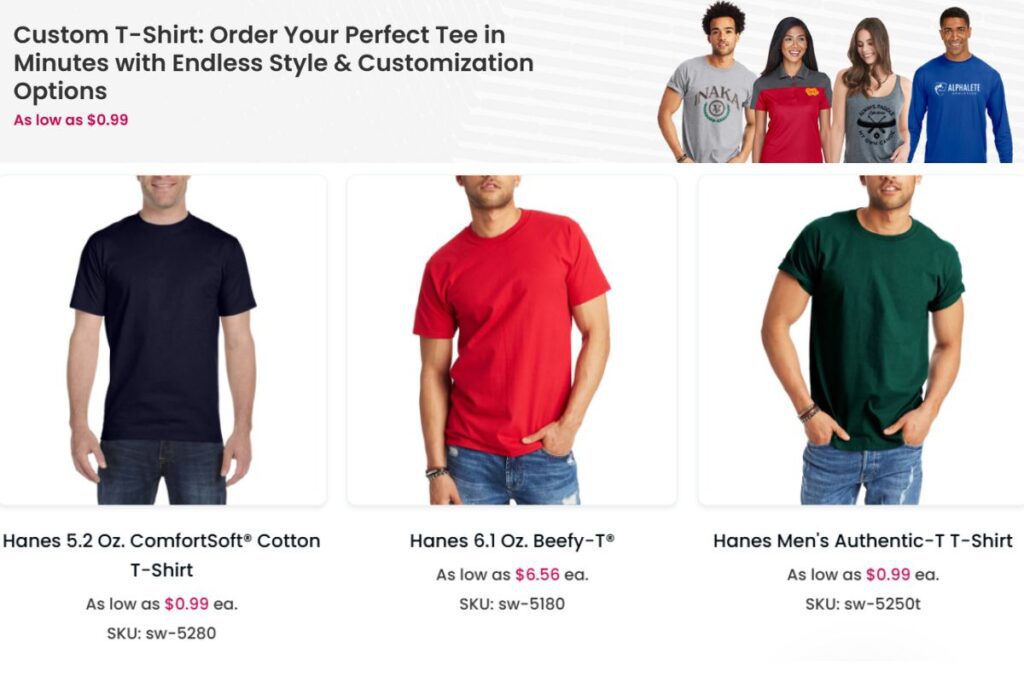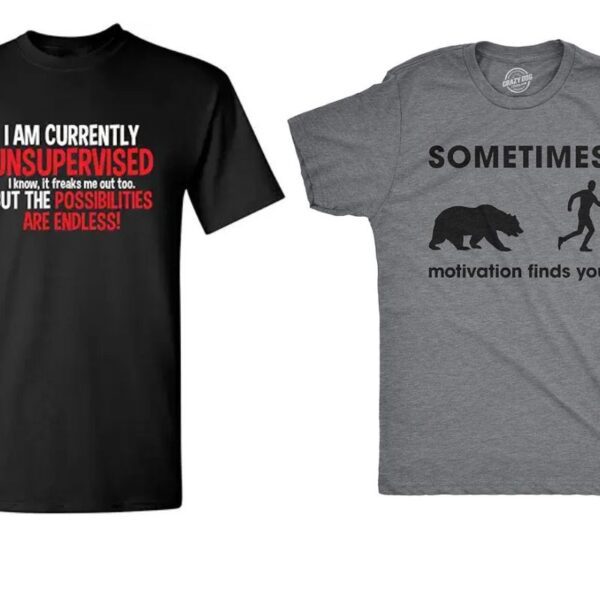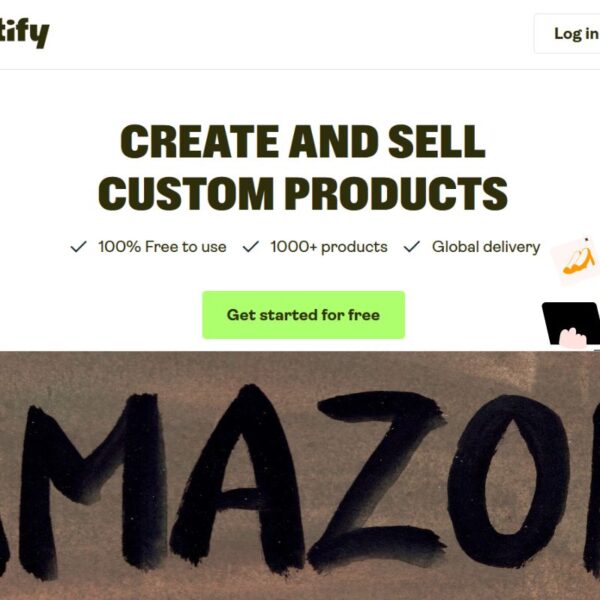White label clothing offers a simple way for you to enter the fashion industry without creating your designs from scratch. This business model allows you to sell products made by others under your own brand name.
You can customize these products with your own labels and packaging, giving you a unique presence in a competitive market.
Table of contents
- Understanding White Label Clothing
- Starting a White Label Clothing Line
- Manufacturing Process
- Customization Options
- Product Development and Design
- Inventory and Supply Chain Management
- Sales and Distribution Channels
- Marketing and Brand Growth
- Financial Considerations
- Regulations and Compliance
- Case Studies
- Frequently Asked Questions
- What are the benefits of using white label manufacturers for clothing lines?
- How does white label clothing differ from private labeling?
- What should I look for in a white label clothing manufacturer?
- Which countries are prominent in white label clothing manufacturing?
- How can a brand successfully market its white label clothing line?
- What legal considerations are there when selling white label clothing?
With the rise of eCommerce, white label clothing has become increasingly popular. You can find various suppliers who provide quality garments ready for branding.
Whether you want to sell t-shirts, hoodies, or other apparel, you can easily launch your clothing line with a few steps and the right partner.
Many entrepreneurs choose white label clothing because it reduces the risk and overhead typically associated with starting a new brand. By leveraging existing products, you can focus on marketing and building your customer base from day one, allowing you to quickly grow your business.
Understanding White Label Clothing
White label clothing offers a unique opportunity for businesses to sell garments with their own branding without handling production. This section covers the basics of white label clothing, its benefits, and distinguishes it from private label options.
Definition and Basics
White label clothing refers to products manufactured by one company and rebranded by another. As a buyer, you can sell these pre-made garments under your own brand name without customizing the items. This option allows you to enter the fashion market quickly, as you do not need to design or create the products from scratch.
Many manufacturers provide a range of styles, fabrics, and sizes, making it easier for you to find items that fit your brand’s identity.
Typically, the manufacturer handles production, quality control, and sometimes even shipping, letting you focus on marketing and selling.
Benefits of White Label Clothing
The main advantages of white label clothing include lower startup costs and reduced risk. Since the manufacturing is handled by someone else, you don’t need to invest heavily in production equipment or inventory.
You can order smaller quantities, which helps in managing your cash flow.
White label clothing also offers flexibility in product offerings. You can adjust your collection based on market trends without committing to large orders.
Additionally, the time saved in production allows you to bring your products to market faster, giving you a competitive edge.
Lastly, you gain the advantage of branding. Selling clothing under your label enhances brand recognition and loyalty. Customers often prefer brands that resonate with them personally, making your business more appealing.
White Label vs. Private Label
While both white label and private label options allow you to sell products under your brand, they differ in significant ways. Private label clothing involves customizing products for your brand, often made to your specifications, which can lead to unique offerings and a distinct identity.
In contrast, white label clothing is more standardized. You purchase products that are ready to sell without significant changes. This means typically lower costs and fewer complexities, making white label clothing a popular choice for new entrepreneurs.
Understanding these differences can help you decide which option best suits your business goals. Whether you choose white label or private label, knowing their features will ensure you align the products with your brand effectively.
Starting a White Label Clothing Line
| Step | Description |
|---|---|
| 1. Market Research | Identify your target audience, trends, and competitors. Analyze demand for white label products. |
| 2. Choose a Niche | Select a specific category like streetwear, activewear, or luxury fashion to focus your brand. |
| 3. Find a Supplier | Partner with a reliable white label manufacturer that offers quality clothing and customization options. |
| 4. Design Custom Branding | Add your logo, labels, and packaging to create a unique brand identity. |
| 5. Set Up an Online Store | Create a website or use e-commerce platforms like Shopify, WooCommerce, or Etsy. |
| 6. Order Samples | Test product quality, fit, and branding before bulk ordering. |
| 7. Price Your Products | Set competitive pricing based on production cost, branding, and market demand. |
| 8. Launch & Market Your Brand | Use social media, SEO, influencers, and ads to promote your clothing line. |
| 9. Manage Orders & Fulfillment | Ensure smooth logistics, shipping, and customer service. |
| 10. Scale & Grow | Expand product lines, explore collaborations, and improve marketing strategies. |
Launching a white label clothing line involves several key steps. You need to research the market, establish your brand identity, and design your first product collection. Each step is crucial for building a successful clothing brand.
Market Research and Target Audience
Begin by conducting thorough market research. Identify your niche within the clothing industry, whether it’s activewear, casual outfits, or sustainable fashion. Use online tools, surveys, and social media insights to gather data on potential customers.
Next, define your target audience. Consider age, gender, lifestyle, and preferences. Knowing your audience helps in making informed decisions about product features and marketing strategies.
Also, analyze your competition. Look for similar brands and assess their strengths and weaknesses. This will help you find gaps in the market that your clothing line can fill.
Creating Your Brand Identity
Developing a strong brand identity is essential. Start by choosing a name that resonates with your target audience and reflects your clothing line’s vision. Your logo should be memorable and visually align with your brand values.
Consider your brand’s voice and message. Decide how you want to communicate with customers, whether it’s playful, professional, or inspiring. Your tone should be consistent across all platforms, including your website and social media.
Create a unique value proposition. Define what sets your brand apart from others. This could include quality materials, unique designs, or ethical manufacturing practices.
Designing Your First Collection
When designing your first collection, focus on a cohesive theme. Select colors, fabrics, and styles that reflect your brand identity. Aim for versatility in your designs to appeal to a broader audience.
Collaborate with clothing manufacturers that specialize in white label services. They can help bring your designs to life while ensuring quality. This collaboration can streamline production and reduce costs.
Don’t forget to consider sizing and fit. Offering a range of sizes can attract more customers. Gather feedback from potential buyers to refine your designs before launch.
Manufacturing Process

The manufacturing process for white label clothing involves several key steps. You must choose the right manufacturer, know your options, and ensure quality control throughout production. Here’s what you need to consider.
Selecting the Right Manufacturer
Choosing the right manufacturer is crucial. You want to find a company that aligns with your brand’s values and quality standards. Research manufacturers carefully to understand their specialties, such as types of apparel, production capabilities, and ethical practices.
Considerations when selecting a manufacturer:
- Reputation: Look for reviews and testimonials from other brands.
- Capabilities: Ensure they can handle your design and volume needs.
- Communication: Choose a manufacturer that is responsive and transparent.
- Location: Consider local versus overseas production for shipping time and costs.
Understanding Manufacturing Options
In white label clothing, you generally have a few options. Familiarize yourself with these to make informed choices.
- Private Labeling: Products made by one manufacturer and sold under your brand name. You have some control over the design.
- Full Custom: You create your designs from scratch, which requires significant time and financial investment.
Both options have pros and cons. Private labeling may be quicker and less expensive, while full custom offers complete design freedom.
Quality Assurance and Control
Quality control is essential in the manufacturing process. This step ensures your products meet the expected standards before reaching customers.
Key quality control measures include:
- Inspection: Conduct regular checks during and after production.
- Testing: Fabric and product durability tests help identify flaws.
- Ethical practices: Ensure your manufacturer follows ethical manufacturing guidelines, including fair labor practices.
Setting clear quality standards upfront helps prevent issues later. Establish a communication plan with your manufacturer to address any quality concerns quickly.
Customization Options
When it comes to white label clothing, customization is key to making your products stand out. You have several options that allow you to create unique pieces tailored to your brand identity.
Types of Customization
Customizing your clothing involves various methods, such as adding unique designs or altering garment features. Here are some common types of customization:
- Fabric Choices: You can select different types, including cotton, polyester, or blends.
- Color Options: You’ll have a wide range of colors to choose from for each item.
- Size Variations: Offering multiple sizes ensures you cater to a broader audience.
Additionally, consider including custom features like zippers, pockets, or unique cuts to enrich your offerings.
Labels and Hang Tags
Labels and hang tags are essential for branding. They communicate your brand’s identity and professionalism:
- Woven Labels: These add a high-quality touch. They can feature your brand logo and are sewn into the garment.
- Satin Labels: Soft and shiny, these labels enhance the feel of your clothing, making it more luxurious.
- Hang Tags: Ideal for providing customers with essential information, such as care instructions, fabric details, and price. You can design these to match your brand’s aesthetic.
These elements not only help in branding but also improve the customer’s experience.
Printing and Embroidery Techniques
Consider several printing and embroidery techniques to personalize your garments effectively:
- Screen Printing: This method allows for vibrant colors and detailed designs. It’s ideal for larger batches.
- Sublimation Printing: Perfect for all-over designs. The dye becomes part of the fabric, ensuring a soft feel and longevity.
- Heat Transfer Labels: These enable you to add your logo or artwork with a clean finish. They are applied using heat and pressure, making them durable yet flexible.
Each technique offers unique benefits, so choose one that aligns with your design goals and budget.
Product Development and Design
| Product | Best Customization Technique |
|---|---|
| T-Shirts | Screen Printing, Direct-to-Garment (DTG) Printing, Embroidery |
| Hoodies | Embroidery, Puff Print, Heat Transfer Vinyl (HTV), DTG Printing |
| Sweatshirts | Chenille Patches, Embroidery, DTG Printing, Screen Printing |
| Joggers | Embroidery, Heat Transfer Printing, Sublimation |
| Caps & Hats | 3D Embroidery, Patchwork, Screen Printing |
| Polo Shirts | Embroidery, Heat Transfer Vinyl, Screen Printing |
| Jackets | Embroidery, Puff Print, Custom Patches, Laser Engraving |
| Activewear | Sublimation, Heat Transfer, Screen Printing |
| Denim Wear | Laser Engraving, Embroidery, Distressed & Washed Effects |
| Workwear & Uniforms | Embroidery, Screen Printing, Reflective Vinyl Printing |
Effective product development and design are key steps in launching your white label clothing line. This process involves creating detailed plans, making samples, and finalizing your product range to meet market needs.
Developing a Tech Pack
A tech pack is an essential document that serves as a blueprint for your clothing line. It outlines all necessary details about your products, including materials, measurements, and colors.
Typically, a tech pack includes the following elements:
- Sketches or Designs: Visual representations of your products.
- Materials List: Specific fabrics and trims required.
- Sizing Specifications: Detailed size charts for each item.
- Production Timeline: Estimated dates for each phase.
Creating a thorough tech pack ensures that manufacturers understand your vision clearly, helping to avoid costly mistakes during production.
Sample Making and Prototyping
Once your tech pack is ready, the next step is to create samples. Samples allow you to see how your designs translate into actual products.
During this stage:
- Choose a Manufacturer: Select a reliable manufacturer who can produce your samples.
- Review Samples: Assess the fit, construction, and overall quality of the sample.
- Make Adjustments: Provide feedback and request any necessary changes.
This iterative process is crucial, as it ensures that the final product aligns with your expectations and market standards.
Finalizing Your Product Range
After perfecting your samples, it’s time to finalize your product range. This involves carefully selecting which products will be included in your launch.
To aid in this decision:
- Market Research: Analyze trends and consumer preferences.
- Quality Checks: Ensure that all items meet your quality standards.
- Pricing Strategy: Set competitive prices that reflect the value of your products.
Finalizing your product range will help you position your white label brand successfully in the marketplace.
Inventory and Supply Chain Management

Effective inventory and supply chain management is vital for your success in white label clothing. You must balance stock levels while meeting demand, all while navigating minimum order quantities set by private label clothing manufacturers.
Managing Inventory Levels
Managing your inventory levels ensures you meet customer demand without overstocking.
Start by tracking sales trends to understand which items are popular.
Use inventory management software to automate tracking. This allows you to monitor stock in real-time.
Aim for a just-in-time (JIT) system, which reduces storage costs and limits excess inventory.
You can adjust orders based on seasonality and market trends.
Create a reorder point for each product to help you know when to restock before you run out.
Utilize analytics to forecast demand accurately.
This will help you adjust your inventory levels based on trends, preventing stockouts or over-production of less popular items.
Dealing with Minimum Order Quantities
Minimum order quantities (MOQs) are important when working with private label clothing manufacturers. Understanding MOQs helps you plan your budget and stock.
Manufacturers may set MOQs to cover production costs.
To handle MOQs effectively, consider your sales projections.
You might be able to increase your initial order to meet the MOQ while ensuring items sell well.
Collaborating with other businesses can also help you meet MOQs.
If you struggle with high MOQs, negotiate with different manufacturers.
Some manufacturers may have flexible terms that can work with your needs.
Always weigh the risks of larger investments against potential returns.
Sales and Distribution Channels
| Channel Type | Description |
|---|---|
| E-commerce Website | Sell directly through your branded website using platforms like Shopify, WooCommerce, or BigCommerce. |
| Online Marketplaces | List products on Amazon, eBay, Etsy, or Walmart Marketplace to reach a wider audience. |
| Social Media Shops | Use Instagram, Facebook, and TikTok Shops to sell directly to customers. |
| Wholesale Distribution | Partner with retailers, boutiques, or fashion stores to sell your products in bulk. |
| Dropshipping Model | Work with white-label suppliers who handle fulfillment while you focus on marketing. |
| B2B Sales & Corporate Clients | Provide custom-branded apparel for businesses, events, or promotional merchandise. |
| Subscription Box Services | Offer clothing subscriptions with curated styles and seasonal drops. |
| Brick-and-Mortar Stores | Sell through physical retail locations or pop-up shops. |
| Influencer & Affiliate Marketing | Partner with influencers and affiliates to promote and sell your clothing. |
| Print-on-Demand Platforms | Use POD services like Printful or Printify to customize and fulfill orders on demand. |
White label clothing offers you various sales and distribution options. Choosing the right channels is essential for reaching your target market effectively.
You can either sell through retail outlets or focus on online platforms, each with its own set of advantages.
Retail vs. Online Sales
Selling through retail stores allows for direct customer interaction.
You can build brand recognition and provide a tactile experience where customers can feel the fabric and see the designs up close. However, retail space can be costly and limit your market reach.
In contrast, online sales offer broader access with lower overhead.
You can sell through your own website or platforms like Amazon and eBay. Plus, online shops can operate 24/7, increasing potential sales time.
You can also easily showcase your entire inventory without the physical constraints of a store.
Balancing both channels can maximize your reach.
Use retail to build your brand locally and leverage online sales to expand your audience globally.
Leveraging Dropshipping and Print-on-Demand
Dropshipping is a fulfillment method where you don’t keep products in stock. When a customer makes a purchase, the order goes directly to the supplier, who ships it to the buyer. This model reduces risk and upfront costs, making it a viable choice for private label businesses.
Print-on-demand takes this a step further by allowing you to customize products only after an order is placed.
This means you can offer unique designs without the burden of excess inventory.
Both methods minimize overhead while maximizing flexibility for your brand.
By combining these approaches, you can efficiently test different markets and collections without a huge financial commitment. This allows you to adapt to customer preferences swiftly.
Marketing and Brand Growth

Marketing is essential for establishing your clothing brand and achieving growth. Effective strategies can help you connect with your target audience and increase brand recognition.
Building Your Online Presence
Creating a strong online presence is crucial for any clothing brand.
Start by designing an engaging website that showcases your products. Make sure it is user-friendly and mobile-optimized.
Utilize social media platforms like Instagram, Pinterest, and Facebook to reach a broader audience.
Consistently post high-quality images of your products, including styling tips and behind-the-scenes content. Interact with your followers by responding to comments and messages.
Consider using e-commerce platforms such as Shopify or WooCommerce for easier sales management.
They offer tools to track customer behavior and optimize your marketing strategies based on data.
Content Marketing and SEO Strategies
Content marketing helps enhance your brand’s visibility.
Create a blog on your website featuring topics related to fashion, trends, and tips for styling your apparel. This positions you as an industry expert.
Incorporate SEO strategies to improve your website’s ranking on search engines.
Use relevant keywords like “private-label apparel” and “fashion brand” throughout your content.
Make sure each article has a clear focus and includes internal and external links to boost SEO.
Utilize visuals, such as videos and infographics, to make content more engaging.
Regularly update your blog to keep the content fresh and encourage readers to return.
Influencer Partnerships and Collaborations
Partnering with influencers can amplify your brand’s reach.
Choose influencers who align with your brand’s values and target audience. Their endorsement can introduce your clothing line to a larger following.
Consider micro-influencers as they often have highly engaged audiences.
Collaborate on product launches or special promotions to create buzz. Provide them with your products for reviews or giveaways to generate excitement.
Attend fashion events or pop-up shops where you can connect with potential partners. Building relationships within the fashion community can lead to valuable collaborations that enhance brand visibility.
Financial Considerations
| Category | Key Considerations |
|---|---|
| Startup Costs | Initial investment for sourcing, branding, website setup, and marketing. |
| Manufacturing Costs | Pricing per unit, bulk order discounts, and customization fees. |
| Logistics & Shipping | Domestic vs. international shipping costs, fulfillment services, and warehousing fees. |
| Marketing & Advertising | Budget for social media ads, influencer partnerships, SEO, and content marketing. |
| E-commerce Platform Fees | Costs for Shopify, WooCommerce, Amazon, or Etsy, including transaction fees. |
| Operational Expenses | Website maintenance, software subscriptions, packaging, and customer service. |
| Profit Margins | Markup strategy based on production costs, market demand, and competition. |
| Tax & Legal Compliance | Business registration, sales tax, and import/export duties. |
| Returns & Refunds | Policies and costs associated with product exchanges and refunds. |
| Growth & Scaling | Reinvestment in new designs, expansion to new markets, and hiring employees. |
When starting a white label clothing business, understanding financial factors is crucial. You need to focus on calculating profit margins and developing a solid pricing strategy to ensure sustainable growth.
Calculating Profit Margins
To determine your profit margin, start by calculating the total costs involved in producing your clothing line. This includes:
- Cost of Goods Sold (COGS): This covers the cost of materials, manufacturing, and labor.
- Additional Expenses: Consider packaging, shipping, and marketing costs.
Once you have these figures, use the following formula:
[ \text{Profit Margin} = \left( \frac{\text{Sales Price} – \text{Total Costs}}{\text{Sales Price}} \right) \times 100 ]
Aim for a profit margin of 30% to 50% to stay competitive.
Keeping an eye on your expenses allows you to adjust prices or cut costs when necessary.
Cost of Goods Sold and Pricing Strategy
Your pricing strategy directly impacts sales volume and profitability.
Start by understanding your COGS to establish a baseline price.
- Market Research: Analyze competitors to set a competitive price.
- Customer Perception: A high price may suggest quality, while a low price might attract budget-conscious buyers.
Consider retaining flexibility in your pricing to adjust for changes in costs or market demand.
For example, if material costs rise, adjust your prices accordingly to protect your profit margins.
Implementing smart packaging can also improve perceptions and justify higher prices.
Prioritize quality packaging to enhance your brand image and potentially increase profit margins.
Regulations and Compliance

When you engage in white label clothing, understanding regulations and compliance is crucial. You need to navigate industry regulations and adhere to strict labeling requirements to ensure your products meet legal standards.
Industry Regulations
In the clothing industry, several regulations apply to white label products. These include safety standards, ethical manufacturing guidelines, and quality assurance protocols.
Safety Standards: Ensure your clothing meets flammability standards set by regulatory bodies like the Consumer Product Safety Commission (CPSC). Compliance helps prevent recalls and protects consumers.
Ethical Manufacturing: Many consumers prefer brands that uphold ethical practices. This means ensuring fair labor practices and a safe working environment.
Quality Assurance: Implement quality control checks to maintain product standards. Up to date certifications from recognized organizations can enhance brand credibility.
Understanding these regulations will help you build a reliable and trustworthy brand.
Labeling Requirements
Proper labeling is not just a legal requirement. It also affects consumer perception and sales. Labels must include:
Fiber Content: Clearly list the materials used in your clothing. For example, if a product contains cotton or polyester, it’s required to state this.
Country of Origin: Indicating where the product was made is necessary. This transparency can influence consumer trust.
Care Instructions: Provide clear information on how to wash and maintain the clothing. Misleading instructions can lead to product damage or dissatisfaction.
Manufacturer Information: Include details about the manufacturer or another entity responsible for the product. This offers accountability.
Ensuring compliance with these labeling requirements not only adheres to laws but also enhances your brand’s legitimacy in the market.
Case Studies
Exploring concrete examples of white label clothing reveals both success stories and challenges. These insights can illuminate your path in the apparel industry, whether you are an aspiring entrepreneur or an established brand.
Success Stories of White Label Brands
Many brands have thrived by using white label clothing. For instance, small businesses are turning to private label services to create unique apparel. This allows them to stand out without the need for extensive design resources.
One notable case is a fitness apparel brand that joined forces with a white label clothing manufacturer. They achieved a 150% increase in sales within a year by offering custom private label clothing that reflected their brand identity.
This approach also benefits high-end brands. They often use white label solutions to expand product lines quickly while maintaining quality. By choosing reputable manufacturers, they ensure that their branding remains consistent and appealing to their customer base.
Challenges and Solutions in White Labeling
White labeling does come with challenges. One common issue is quality control. When relying on a white label clothing manufacturer, you must ensure their standards align with your expectations.
For instance, a new clothing line launched products that initially fell short of quality standards. They faced returns and bad reviews. To overcome this, they established a comprehensive quality inspection process before products were shipped.
Another challenge is brand differentiation. In a crowded market, you need to ensure your products stand out. A solution is to invest in unique designs or branding for your custom private label clothing. This ensures that even if the product is similar to competitors, your brand remains unique and recognizable.
Frequently Asked Questions
This section addresses common inquiries related to white label clothing. You will find specific details that clarify benefits, differences, and key factors to consider in this industry.
What are the benefits of using white label manufacturers for clothing lines?
Using white label manufacturers allows you to offer a wide range of products without the need for large upfront investments.
This approach gives you more control over branding and design, which can lead to higher profit margins. It also reduces the complexity of managing production.
How does white label clothing differ from private labeling?
White label clothing is produced by one company and sold under another brand’s label. Private labeling, on the other hand, typically requires more involvement from the brand in design and production. With white label, you often choose from existing designs.
What should I look for in a white label clothing manufacturer?
When selecting a white label manufacturer, check for quality workmanship and materials. Assess their production capacity and delivery timelines. Customer service and communication should also be reliable, as these aspects impact your business efficiency.
Which countries are prominent in white label clothing manufacturing?
Countries like China, Bangladesh, and India are significant players in white label clothing manufacturing. These regions often provide access to a range of fabrics and skilled labor. The competitive pricing in these areas also attracts many brands.
How can a brand successfully market its white label clothing line?
To market your white label clothing line, focus on building a strong brand identity.
Use social media and digital marketing to reach your target audience effectively.
Collaborate with influencers or run promotions to increase visibility and drive sales.
What legal considerations are there when selling white label clothing?
It’s crucial to understand copyright and trademark laws when selling white label clothing. Ensure that your designs do not infringe on any existing trademarks.
Also, keep in mind that labeling requirements vary by country, so familiarize yourself with local regulations.




